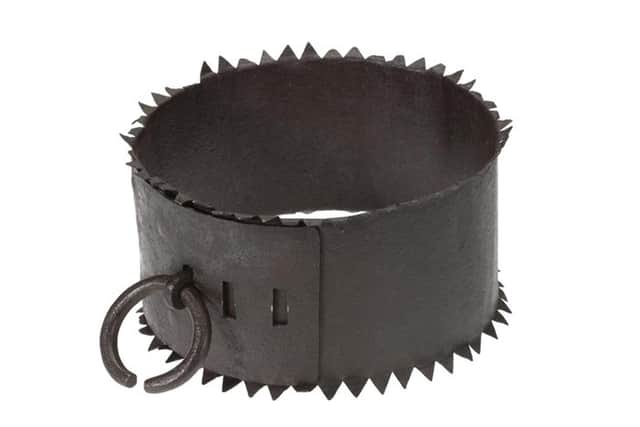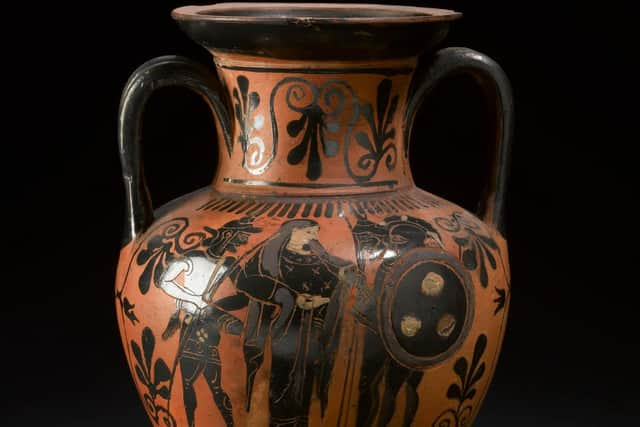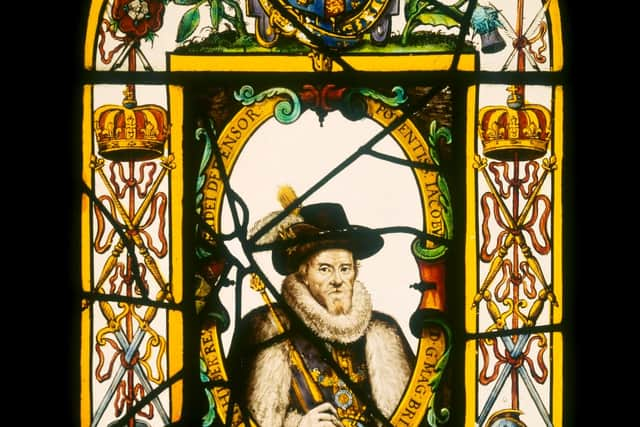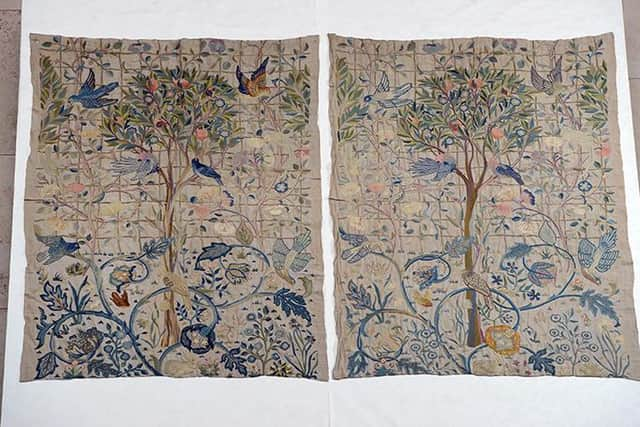Hidden gay histories of national collection treasures revealed in Scottish trail
and live on Freeview channel 276
A guide to the LGBTQIA+ histories of a number of objects, which span hundreds of years, have been illuminated in a new guide and trail at National Museum of Scotland.
The objects include a stained glass window that commemorates King James VI and his “favourite”, George Villiers, the Duke of Buckingham, and a 17th-century iron collar from Fife.
Advertisement
Hide AdAdvertisement
Hide AdThe collar was used as an instrument of torture around the same time one Renfrewshire woman was accused of being a lesbian, with authorities then treating the case as one of witchcraft.


A Greek amphora, which depicts a bi-sexual hero, and a revered all-woman group of hunters and warriors, is also included in the guide.
Laura Bennison, community engagement officer at National Museum of Scotland, said: “LGBTQIA+ stories have often been left out of mainstream history and we are keen to make them more visible.”
The idea for the trail first came from a guide at the museum, who identified there was a “real interest” in LGBTQIA+ stories among visitors, as well as gap in interpretation of some of the objects.


Advertisement
Hide AdAdvertisement
Hide AdThe guide has been developed by a group of young adults from Impact Arts in Edinburgh.
The stained glass window in the Kingdom of the Scots gallery is a key feature of the new guide. It depicts King James VI, son of Mary Queen of Scots, who had a succession of male “favourites” during his reign, with the term then used to describe a romantic partner or lover.
The most well-known of these was George Villiers, the Duke of Buckingham, with the window made to commemorate a visit the pair made to an abbey in Oxfordshire.
An iron collar – or jougs – from 17th-century Fife, which were used to torture those accuse of witchcraft, illustrate the story of Maud Galt, who was accused of being a lesbian by her maid.


Advertisement
Hide AdAdvertisement
Hide AdGalt, of Kilbarchan, married a man to hide her sexuality and had a relationship with one of the couple’s servants, Agnes Mitchell, who later accused Galt of sexually assaulting her and others.
The Privy Council treated the allegations as witchcraft, although the outcome of the legal action is unknown.
Meanwhile, a piece of Greek amphora, which dates to 500 BC, shows the Greek bisexual hero Herakles (called Hercules by the Romans) and the Amazons – a closed society of female warriors who have become lesbian icons – on one side.
In the Design for Living gallery, an embroidery by May Morris (1862–1938), a designer, teacher, jeweller and editor – and daughter of design pioneer William Morris – features on the trail.


Advertisement
Hide AdAdvertisement
Hide AdMay Morris lived with Mary Lobb, a gardener at the family home, for 22 years and following Morris’ death, the bulk of the estate and most of her personal items were left to Mary.
Ms Bennison said more objects from the museum collection would be added to the guide through time.
She said: “There is a contemporary significance to these stories for everyone. A more truthful representation of LGBTQIA+ lives is also an important statement of welcome to members of that community today and a crucial step in demonstrating that museums and cultural institutions are safe spaces for all.”
A message from the Editor:Thank you for reading this article. We're more reliant on your support than ever as the shift in consumer habits brought about by Coronavirus impacts our advertisers.
If you haven't already, please consider supporting our trusted, fact-checked journalism by taking out a digital subscription.
Comment Guidelines
National World encourages reader discussion on our stories. User feedback, insights and back-and-forth exchanges add a rich layer of context to reporting. Please review our Community Guidelines before commenting.
